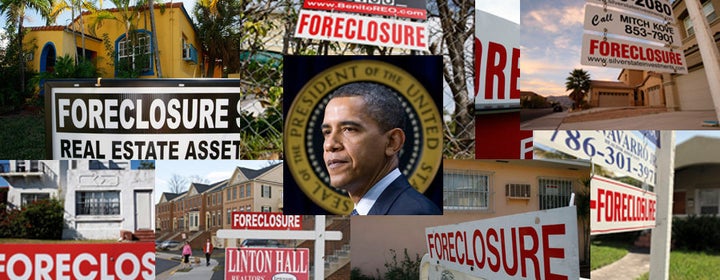
Just how badly is President Obama's $75 billion foreclosure program working out? Consider these newly-released numbers: Out of every 100 homeowners who came to JPMorgan Chase for help under the program, just 15 have or will likely receive a permanent payment reduction.
What happened to the other 85? For every 100 trial plans initiated from April through September 2009 under the Home Affordable Modification Program:
- 29 borrowers did not make all required payments under their trial plan;
- 20 borrowers did not submit all documents required for underwriting;
- 31 borrowers submitted all required documents but the documents did not meet HAMP underwriting standards, due to such things as missing signatures or nonstandard formats;
- 4 borrowers were or are likely to be rejected for undisclosed reasons;
- 1 borrower will not or is not likely to get their payment lowered.
The data comes from the prepared remarks bank officials plan to make Tuesday before the House Financial Services Committee. The testimony was posted Monday on the committee's website.
It adds up to a brutal illustration of just how the HAMP program, which is supposed to reduce troubled homeowners' monthly payments to 31 percent of their income, is failing.
In October testimony before the Elizabeth Warren-led Congressional Oversight Panel, Herbert M. Allison Jr., the Treasury Department's assistant secretary for financial stability, reluctantly admitted that Treasury had internally forecast that "up to 75 percent" of trial modifications would achieve permanent status.
The watchdog panel had expressed early doubts about the program's ultimate success, noting that as of Sept. 1, only 1,711 homeowners had received a permanent modification, less than two percent of those eligible at the time.
The administration set a three-year goal of offering 3 to 4 million homeowners lower mortgage payments through a modification. But, looking at JPMorgan Chase, with 85 percent of those who actually apply for the modifications being denied, that's just not going to happen.
Meanwhile, foreclosures continue to mount. The number of delinquent borrowers continues to set record highs. Wall Street, however, expects to receive bonuses not seen since the height of the credit bubble.
JPMorgan Chase offers reasons for the program's failings. They all point to the Obama administration.
For one, the administration is directly responsible for a good chunk of the homeowners being improperly rejected for the program, according to Chase. How?
The government created a formula to guide mortgage servicers in their modification efforts. After plugging the variables into this formula, the result is supposed to tell servicers whether the troubled loan's owner would make more money through modification. If so, the servicer is required to modify. But according to Chase, the government's formula is flawed, as it overstates the chances for re-default. Because of this, Chase argues, up to 25 percent of homeowners are wrongly missing out on the program.
The formula's shortcomings have been extensively reported on, most notably by the nonprofit investigative journalism organization ProPublica.
The problem is not isolated to Chase. "The rates for converting trial modifications into permanent that we are hearing from servicers and Treasury are simply not where they need to be," said Richard H. Neiman, New York's top bank regulator and a member of the Congressional Oversight Panel. "We have anecdotal evidence that consumers continue to face major issues with servicers such as JPMorgan Chase and Bank of America losing their documentation or not clearly explaining the modification process to begin with."
He continued: "The concerns that the program is facing go well beyond disappointing servicer performances at this point, though. While Treasury is implementing recommendations that we have been calling for, such as streamlining the documentation process and creating an online portal for tracking and submitting documents, the reality is that many of these measures will not be fully in place until March 1, after the deadline for many of these trial modifications. Add that to an increasing unemployment rate and a rise in prime mortgage foreclosures and we can clearly see that the program as it is cannot keep up with the pace of today's economic reality."
Neiman is calling for a new program. "The housing crisis began with borrowers who received inappropriate and unsustainable subprime loans. But as the recession lingers, prime borrowers with loans that are otherwise affordable are increasingly at risk of foreclosure due to job loss or other temporary hardship," he said. "I therefore continue to urge Treasury to develop a foreclosure prevention program to assist responsible homeowners while they get back on their feet using bridge loans to help through the difficult period, and engaging the states to help."
The Congressional Oversight Panel will release its latest report on the administration's program on Wednesday. It's expected to find serious shortcomings in the $75 billion effort, sources say.
And at the panel's hearing on Thursday, Neiman said he intends to question Treasury Secretary Timothy Geithner "regarding the reasons behind these unexpectedly low conversion rates and the possibility of using TARP funds to support emergency mortgage assistance programs, such as the bridge loans, at the state level."
